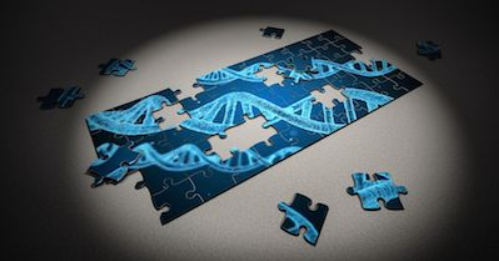Most human cells have 23 pairs of chromosomes. Any deviation from this number is fatal to the cell, and some hereditary diseases, such as Down's syndrome, are caused by an abnormal number of chromosomes.
For decades, biologists have also known that cancer cells usually have too few or too many copies of a chromosome, a state known as aneuploidy. In a new study on prostate cancer, the researchers found that higher levels of aneuploidy led to higher rates of death.
The results of the study indicate that the patient's prognosis can be predicted more accurately and can be used to alert doctors which patients may need more aggressive treatment. “For me, the exciting opportunity here is to be able to provide information for treatment because prostate cancer is a ubiquitous cancer,” the authors said. The results were published in the recent issue of PNAS.
Aneuploidy occurs when cells make mistakes when sorting chromosomes during cell division. When aneuploidy occurs in embryonic cells, it is almost always fatal to the organism. For human embryos, extra copies of any chromosome are fatal, except for chromosome 21, which produces Down's syndrome; chromosomes 13 and 18, leading to developmental disorders called Patau and Edwards syndrome; and X and Y sex chromosomes . Additional copies of sex chromosomes can cause various diseases, but are usually not fatal.
Most cancers also show a very high prevalence of aneuploidy, which suggests a paradox: Why does aneuploidy impair the viability of normal cells, and non-euploid tumor cells can grow uncontrollably? There is evidence that aneuploidy makes cancer cells more aggressive, but it is difficult to clearly prove this connection, because in most types of cancer, almost all tumors are aneuploid, making it difficult to compare.

(Source: Www.pixabay.com)
Amon said that prostate cancer is an ideal model for exploring the link between aneuploidy and cancer invasiveness, because unlike most other solid tumors, many prostate cancers (25%) are not aneuploid or have only a few chromosomal changes. This makes it easier for researchers to assess the impact of aneuploidy on cancer progression. The researchers obtained genetic sequencing information for these samples, as well as data on whether and when their prostate cancer spread to other organs and whether they had died of the disease. The researchers proposed a method for calculating the degree of aneuploidy in each sample by comparing the gene sequence of these samples with the aneuploidy data of the prostate genome in the cancer genome map. They can then correlate aneuploidy with patient outcomes, and they find that patients with a higher degree of aneuploidy are five times more likely to die from the disease. This is true even after considering the difference in Gleason scores, a measure of how well a patient's cells are similar to cancer cells or normal cells under the microscope, which doctors use today to determine the severity of the disease. Studies have shown that measuring aneuploidy can provide additional information for doctors who decide how to treat patients with prostate cancer.
'Prostate cancer is seriously over-diagnosed and severely over-treated. Many people have radical prostatectomy, which has a major impact on people's lives. On the other hand, thousands of men die every year from prostate cancer. Oligability may be another way to help inform risk stratification and treatment, especially in people who have a high Gleason score in the population, and therefore have a higher risk of dying from cancer.'
The researchers found that the most common aneuploid chromosomes in prostate tumors are chromosomes 7 and 8. They are now trying to find specific genes on those chromosomes that may contribute to the survival and spread of cancer cells, and they are also investigating why some prostate cancers have higher levels of aneuploidy than other cancers.
Another type of cancer with a lower level of aneuploidy in most patients is thyroid cancer, so Amon now hopes to study whether thyroid cancer patients with higher levels of aneuploidy also have higher mortality. “Few thyroid tumors are highly aggressive and lethal, and I’m beginning to wonder if these tumors have aneuploidy,” the authors say.
Source of information: Measuring chromosome imbalance could clarify cancer prognosis
Source: Bio Valley